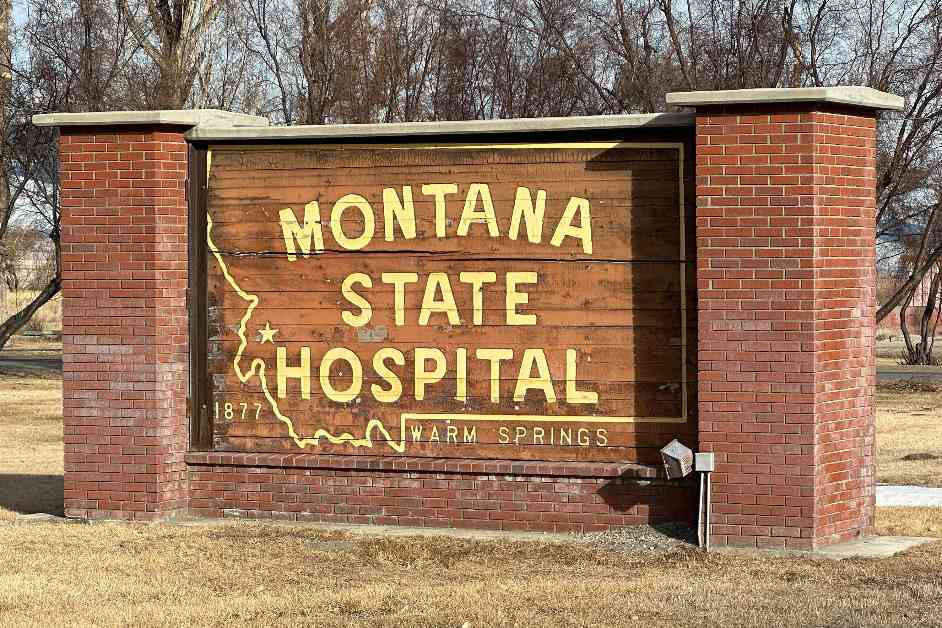Montana Hospital Struggles with Overhaul, Lawmakers Face Uncertain Future
Montana lawmakers are currently grappling with the daunting task of improving patient care and overall operations at the historic Montana State Hospital. The facility, which has been in existence for nearly 150 years, has recently faced significant challenges in providing adequate care for patients and retaining staff. The troubles came to a head in 2022 when federal investigators withdrew the hospital’s federal certification and funding from the Centers for Medicare & Medicaid Services due to a series of preventable patient deaths, as well as other issues including injuries, falls, and infections.
In response to these critical deficiencies, the administration under Republican Gov. Greg Gianforte initiated a complex and costly restructuring of the hospital’s operations in hopes of regaining certification. However, the endeavor appears to be a lengthy process, requiring additional years of work and tens of millions of dollars in extra funding from the Republican-majority legislature. The prolonged timeline has prompted some lawmakers to express exasperation over the slow progress, likening the situation to trying to coax a teenager to tidy up their room.
Challenges and Strategies
In the current legislative session, lawmakers hold the authority to allocate or restrict funds for Gianforte’s health department and enact laws pertaining to state hospital oversight, admissions, and discharge procedures. Health officials within the administration are actively engaged in revamping the hospital, stabilizing its leadership, and enhancing staff retention. Meanwhile, legislators are focusing on bolstering mental health services outside the hospital, a move supported by various mental health care advocates.
David Carlson, the Executive Director of Disability Rights Montana, emphasizes the interconnectedness of the hospital’s future and the expansion of community-based services in Montana. He stresses that relying solely on a single hospital in Warm Springs to meet federal standards is unrealistic. The facility, situated in southwestern Montana near Butte, caters to both civilly and criminally committed patients. Federal inspectors revoked the hospital’s certification due to numerous violations, including patient care lapses, infection control issues, medication mismanagement, and fatalities.
Progress and Challenges Ahead
Despite the setbacks, recent steps have been taken to address some of the hospital’s deficiencies. Notably, the facility has ceased the use of chemical restraints, appointed a permanent CEO and chief medical officer, and witnessed an uptick in job applications. However, the road to recertification remains arduous, with a revised target set for 2026 due to significant repairs at the central hospital. Physical renovations, such as repairing mold-infested walls, have necessitated relocating patients to alternative facilities.
The Gianforte administration has requested substantial funding from the legislature to sustain the hospital’s operations and staffing. Acknowledging the need for modernization, another essential upgrade on the agenda is the implementation of a comprehensive electronic health records system. While the initial budget allocation was approved in 2023, finalizing the project has encountered delays pending contract negotiations with vendors. The hospital anticipates a three-year timeline for the system’s development and installation.
Efforts from prior legislative sessions to effect change at the hospital are still in progress. An initiative to transfer dementia and traumatic brain injury patients to community-based settings by mid-2023 remains ongoing. Additionally, a law mandating the sharing of unredacted abuse reports with oversight groups has been met with challenges due to staffing turnovers and procedural shifts at the hospital.
In conclusion, while Montana authorities and advocates work towards enhancing patient care and operational standards at the Montana State Hospital, the ultimate responsibility lies with the administration and leadership team. Failure to achieve desired improvements may prompt intervention from the judiciary to enforce accountability and uphold patient rights. As the complex process unfolds, the close collaboration between policymakers, healthcare professionals, and advocacy groups will be pivotal in ensuring the well-being of patients and the long-term success of the hospital.

















